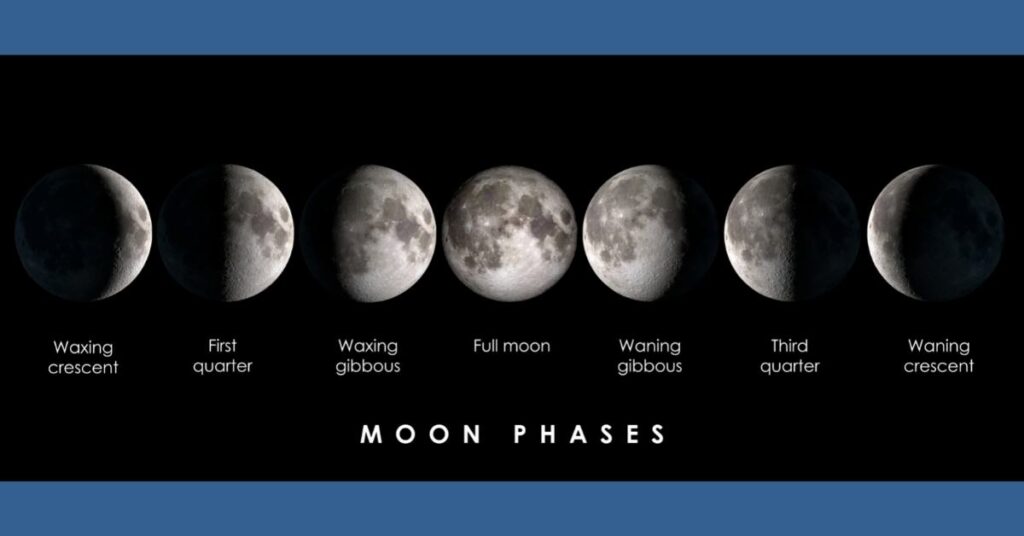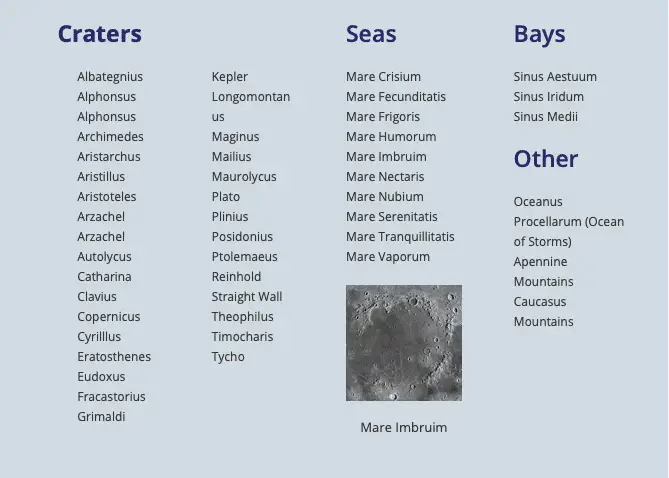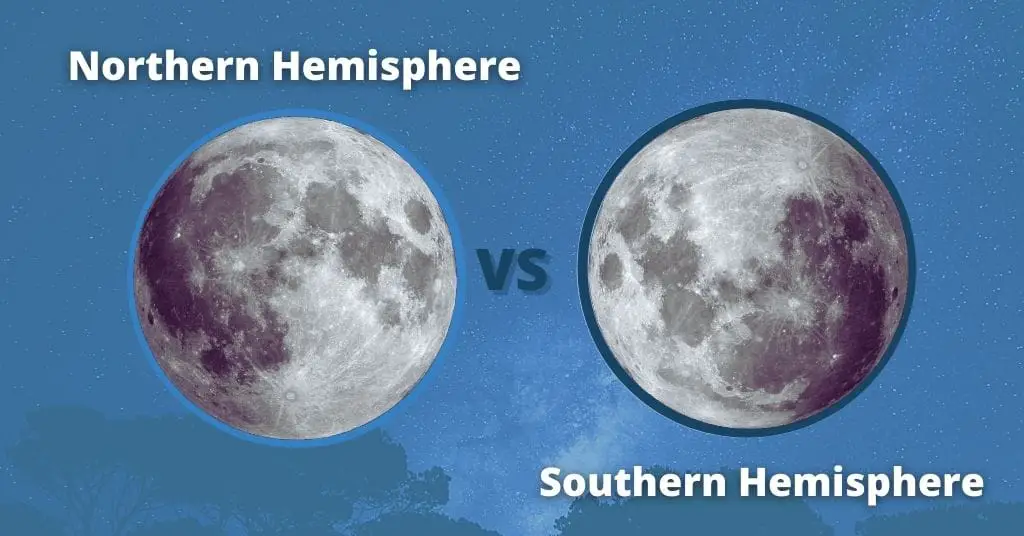There are a ton of Moon features to keep you occupied for hours! Looking from latitudes south of the equator there’s no ‘man in the moon’, but rather a ‘rabbit’. I cover what to look for on the Moon, lunar features that will keep you intrigued in observing the Moon.
You might not realize that you’d get a different perspective of the Moon in the southern hemisphere…
…in each of the eight defined Moon phases.

Because the south is at the top of the Moon in the southern hemisphere, the lunar phases you see from that part of the world are inverse to the above depiction…
Following a new Moon, southern hemisphere viewers will see a sliver of light appearing on the left edge. This lighted area will expand to the right until it’s full Moon and then recede until a slither on the right edge before reaching the new Moon again.
This is opposite to what you see in the image shown for the northern hemisphere. Note: Most images of the Moon phases online relate to the northern hemisphere.
How backyard astronomers refer to timing when observing the Moon…
Number of days (or age) after the new Moon:
- 7 days = first quarter
- 14 or 15 days = full Moon
- 22 days = last quarter
You’ll see this type of reference listed in Moon guides
What Can You See On the Moon With a Telescope
I list several lunar features in my article on what to expect to see through binoculars. Apart from these, there are lakes, valleys, marshes, scarps, and Apollo landing sites as well as phenomena such as the white spokes, the terminator, Earthshine, and liberations that add to enthralling Moon observational experiences.

You might notice the craters are named after past well-known philosophers and scientists. Theophilus is the largest of the craters at 100km wide. The darker areas on the Moon are the seas (mares in Latin). They are called this because Galileo and his peers at the time assumed they were bodies of water on the Moon.
Key to lunar features
What you can expect to see through any telescope is a swag of features of the Moon that will enthrall you for hours. According to astronomy writer, Terence Dickinson, even a simple kid’s telescope, a 2″ refractor, will pick up Moon craters <10km in diameter at 50x magnification. You’ll see more and more as you increase in aperture size. The limit in what you see is roughly 1km.
If you use a Moon map you’ll notice unfamiliar names for common features. It is a Latin naming convention. Here are the meanings…
| rille | Rima |
| sea | Mare |
| bay | Sinus |
| lake | Lacus |
| valley | Vallis |
| marsh | Palus |
| scarp | Rupes |
| mountain | Mons |
| ocean | Oceanus |
| promontory | Prom |
| mountain range | Montes |
One phenomenon you might see observing the Moon at times is a lunar halo. This is an optical illusion as I explain in my article covering Moon halos and weather prediction.
What you’ll see
On a full Moon, you’ll see white spokes radiating from the crater at the bottom (more to the top if in the southern hemisphere), Tycho, is spectacular. Tip: Consider using a filter designed to add contrast and enhance observations of the Moon.

Outside of the full Moon, it’s not only a good time to stargaze but also excellent to observe the Moon because the terminator allows 3D perspectives of features situated along it as it moves across, changing each day with the wax and wane. Along this line, look for merged craters, terraced walls, smooth dark flooded craters, shadows cast from scarps, and more. Get yourself an Astronomy yearbook with Moon observations per age and you’ll have a lot of interesting effects to see.
Earthshine is what you see of the light on the Moon reflected from the Earth. It’s the dull glow on the unlit part of the Moon.
Liberations will allow you to see that bit more on rare occasions. You’ll get to see features on the edges you wouldn’t normally observe. Get a good Moon Map or a book on observing the Moon to help direct you. Here’s one for the southern hemisphere, where you’ll find the best dark places, but if you click through to Amazon, you’ll find ones to suit your northern latitudes.

See the price at Amazon (affiliate link)
Or check it out at Quasar Publishing.
Bottom line
There’s lots to see on the Moon to keep you interested beyond the popular rare lunar events that are publicized. Don’t forget you can see quite a few features of the Moon with your naked eye. And, that if you happen to venture to the southern hemisphere, the Moon is upside-down from what you are used to if you’re from the northern half of the world.
